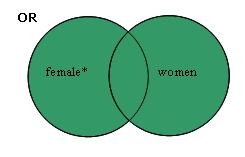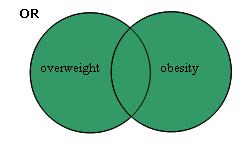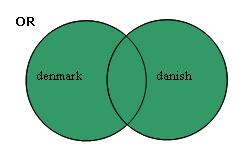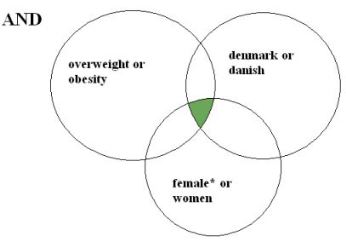Search technique
Operators
When you combine search terms you need to use search operators. The most common search operators are AND, OR and NOT (alias Boolean operators).

OR
By typing OR between the search terms, you will find references containing either some of or all search terms. That is to say either-Or or both-and. OR is used between synonyms to expand the search. See example:



AND finds references containing all search terms. That is to say both-and. And is used to narrow the search:

NOT finds references, with the first term, but excludes the other. NOT is used to exclude references. Be careful using the NOT operator, as it is easy to loose relevant references by exluding search terms.
Trunkation/wildcards
These are used to search the root of the word e.g. singular and plural forms of a word. The truncation sign (wildcard) is often an asterix: *. It replaces often zero to many letters. Sometimes the wildcard can be a question mark (?) or a dollar sign $.
Examples of truncation with a question mark: pig? finds pig og pigs.
Examples of truncation with asterix: food* find food, foods, foodborne, foodstuffs etc.
Truncation inside a word: colo?r finds both colour and color. sawt??th searches both sawtooth and sawteeth.
Signs are used different in different databases.
|
Database system: |
0 -1 tegn |
0 - mange tegn |
Kun ét tegn |
|
OVID (e.g. Medline) |
? |
* |
|
|
Web of knowledge (e.g. WOS) |
$ |
* |
? |
|
Scopus |
* |
? |
|
|
Proquest (e.g. Econlit) |
* | * |
